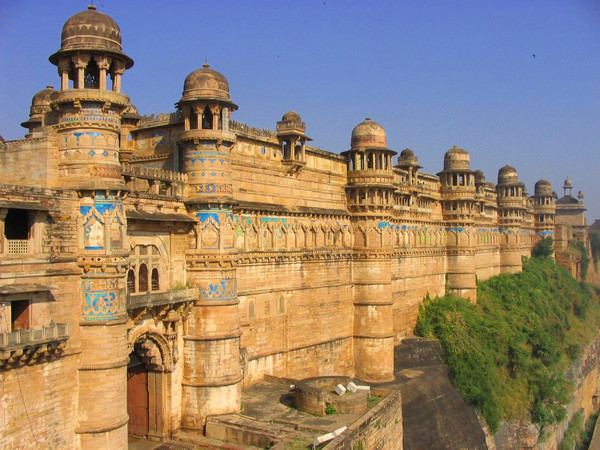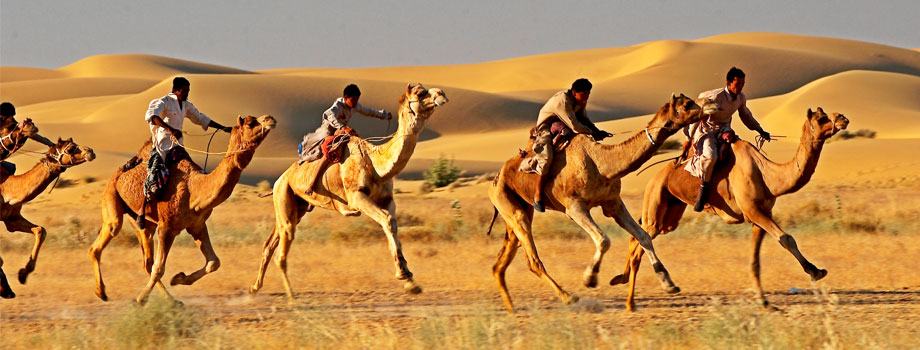-
Wild LIfe in India
India is home to many National parks and Wildlife sancturies within d Read more -
Kerla
With the Arabian Sea in the west, the Western Ghats towering 500-2700 m in Read more -
Taj Mahal
The Taj Mahal is one of the most wonderful tourism destinations in India an Read more -
Varanasi
The land of Varanasi (Kashi) has been the ultimate pilgrimage spot for Hind Read more -
Jaisalmer
The History of Jaisalmer has a charm of its own. Like all other cities of R Read more -
Amber Fort
Established in the year 2005, at JAIPUR (RAJASTHAN, India) we, "SHOW Read more
GWALIOR
 Gwalior presents a plethora of sights given it's history. If there is one thing you can’t escape in Gwalior, it’s the Gwalior Fort . Perched high on a rocky massif, the imposing edifice with its blue tiled palace is visible from each and every corner of the city.
Gwalior presents a plethora of sights given it's history. If there is one thing you can’t escape in Gwalior, it’s the Gwalior Fort . Perched high on a rocky massif, the imposing edifice with its blue tiled palace is visible from each and every corner of the city.Nearly three km long and built at a vantage height of 100 m above the city, the fort seems to cling to the edged of steep cliffs. It has been the scene of momentous events in the history of the entire region. On the steep winding southwest approach road to the fort, near the Urwahi Gate, you pass Jain monoliths of the Tirthankaras carved into the rock face between the 7th and 15th centuries, the tallest being 19m.
Within the fort lies the Scindia School , a famous residential school for boys established by the erstwhile Maharaja Of Gwalior over one hundred years ago. The road winds along past twin temples and a modern Gurudwara (Sikh Temple) till it ends at the ruined palace complex of the Man Mandir Palace , built by Raja Man Singh towards the end of the 15th century.
This is an impressive structure that clings to the very edge of the fort, its façade embellished with blue ceramic tiles. The palace of Raja Man Singh forms the backdrop for an excellent ‘son-et-lumiere’ show held here every evening. It is amongst the best in the country and vividly recreates an era and brings to life the history of the Fort and the love story of Raja Man Singh and his Queen Mrignayani.
The Gujari Mahal is a 15th century palace built by Raja Man Singh for his beloved Gujar (tribal) Queen, Mrignayani. It is now an archaeological museum with an impressive collection of exhibits some dating back to the 1st century AD. Do ask the curator to show you the exquisite ‘Shalbhanjika’ , a statue of the tree goddess, brought here from Gyraspur.
A Pratihara Vishnu shrine ,at the 9th century Teli ka Mandir , towers to a height of over 100 ft. It is built in a unique blend of South Indian architecture with North Indian decorative motifs. Not far from the Mandir is the historic Suraj Kund , the pool with the curative waters associated with the founder of the fort and the city of Gwalior.
On the eastern side of the fort, are the twin Saas Bahu ka Mandir , commonly believed to be dedicated to mother-in-law and daughter-in-law but, in fact, dedicated to ‘Sahasrabahu’, ‘the thousand-armed’ Lord Vishnu. Both these temples made for a mother-in-law and daughter-in-law are richly embellished examples of 11th century temple architecture.
The Jai Vilas Palace , built in 1875, and the current residence of the Scindia Royal family, provides an insight into the lifestyle of the erstwhile Maharajas. 35 rooms in the Palace have been converted into a museum where there is an interesting collection of family memorabilia including royal robes, thrones and even a crystal train that chugged around an enormous dining table with condiments and other delicacies for royal guests! In the Durbar Hall of the Palace is a pair of chandeliers said to be the world’s largest, each 12.8m high and weighing 3 tons. The palace guides tell visitors that the chandeliers were installed only after the ceiling had been tested to take the weight of ten elephants!
The maseum of Ghaus Mohammed , an Afghan prince, Tansen’s tomb , the City Park and memorials to Rani Jhansi and Tantia Tope as well as Scindia kings and queens are the other monuments in the city.
The Sarod Ghar is a Museum of Music set up in the house of the celebrated sarod player, Ustad Hafiz Khan, where you see ancient musical instruments belonging to great Indian musicians.





